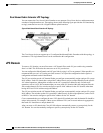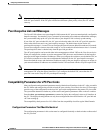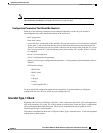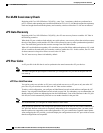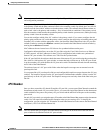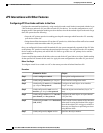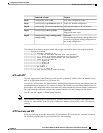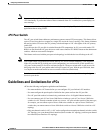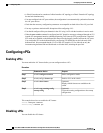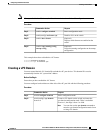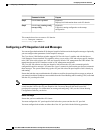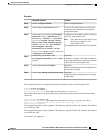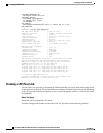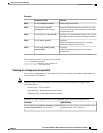
We recommend that you set all the vPC peer link interfaces to the STP network port type so that Bridge
Assurance is automatically enabled on all vPC peer links. We also recommend that you do not enable any of
the STP enhancement features on VPC peer links.
You must configure a list of parameters to be identical on the vPC peer switches on both sides of the vPC
peer link.
STP is distributed; that is, the protocol continues running on both vPC peer switches. However, the configuration
on the vPC peer switch elected as the primary switch controls the STP process for the vPC interfaces on the
secondary vPC peer switch.
The primary vPC switch synchronizes the STP state on the vPC secondary peer switch using Cisco Fabric
Services over Ethernet (CFSoE).
The vPC manager performs a proposal/handshake agreement between the vPC peer switches that sets the
primary and secondary switches and coordinates the two switches for STP. The primary vPC peer switch then
controls the STP protocol for vPC interfaces on both the primary and secondary switches.
The Bridge Protocol Data Units (BPDUs) use the MAC address set for the vPC for the STP bridge ID in the
designated bridge ID field. The vPC primary switch sends these BPDUs on the vPC interfaces.
Display the configuration on both sides of the vPC peer link to ensure that the settings are identical. Use
the show spanning-tree command to display information about the vPC.
Note
vPC and ARP
Table synchronization across vPC peers is managed in Cisco NX-OS using the reliable transport mechanism
of the Cisco Fabric Services over Ethernet (CFSoE) protocol. To support faster convergence of address tables
between the vPC peers, the ip arp synchronize command must be enabled. This convergence is designed to
overcome the delay involved in ARP table restoration when the peer-link port channel flaps or when a vPC
peer comes back online.
To improve performance, we recommend that you turn on the ARP sync feature. By default, it is not enabled.
To check whether or not ARP sync is enabled, enter the following command:
switch# show running
To enable ARP sync, enter the following command:
switch(config-vpc-domain) # ip arp synchronize
CFSoE
The Cisco Fabric Services over Ethernet (CFSoE) is a reliable state transport mechanism that you can use to
synchronize the actions of the vPC peer devices. CFSoE carries messages and packets for many features linked
with vPC, such as STP and IGMP. Information is carried in CFS/CFSoE protocol data units (PDUs).
When you enable the vPC feature, the device automatically enables CFSoE, and you do not have to configure
anything. CFSoE distributions for vPCs do not need the capabilities to distribute over IP or the CFS regions.
You do not need to configure anything for the CFSoE feature to work correctly on vPCs.
You can use the show mac address-table command to display the MAC addresses that CFSoE synchronizes
for the vPC peer link.
Cisco Nexus 5000 Series NX-OS Interfaces Configuration Guide, Release 5.2(1)N1(1)
78 78-26881-OL
Configuring Virtual Port Channels
vPC Interactions with Other Features



